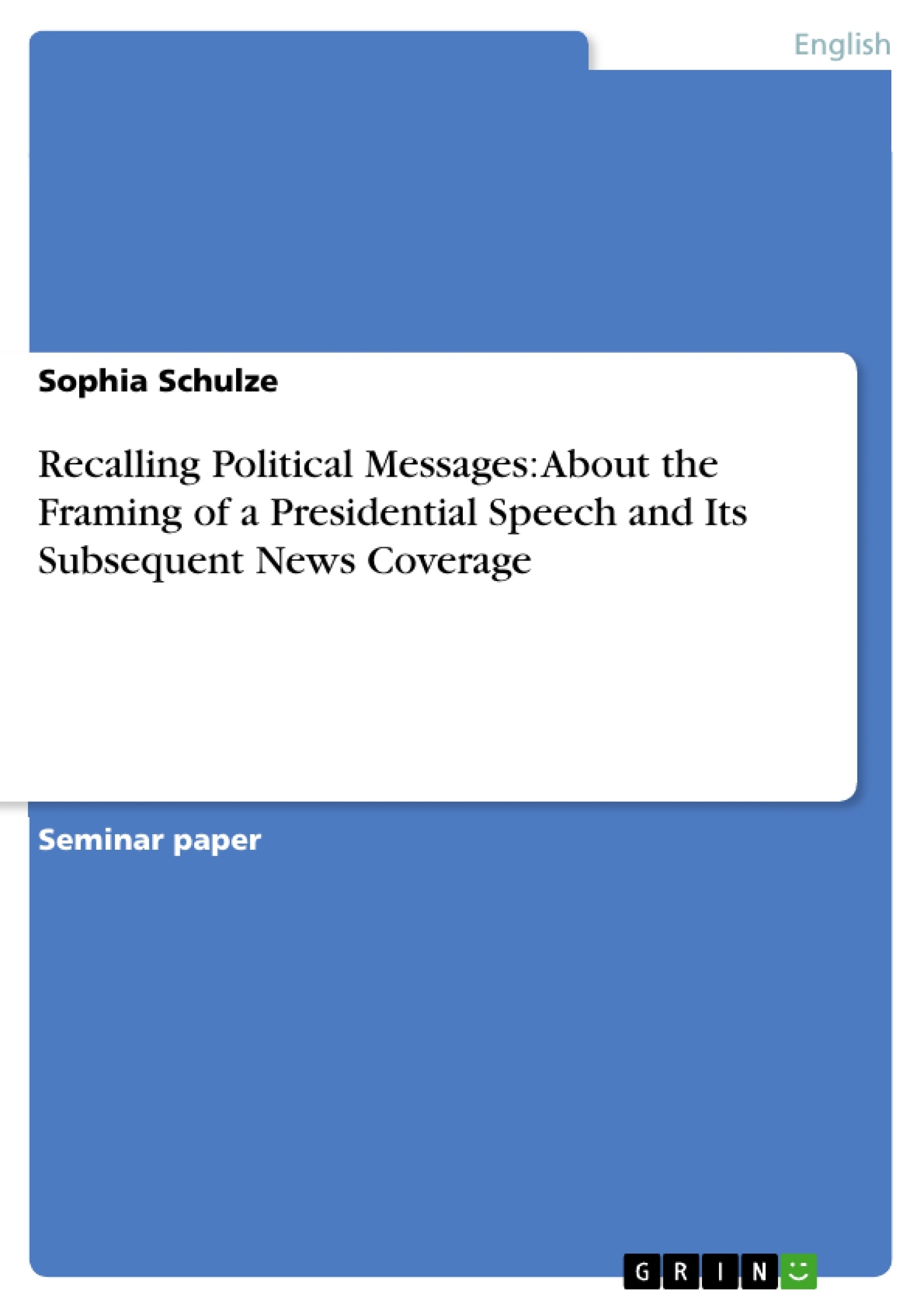It is widely known that the public in the U.S. counts on the mass media to get information about political affairs these days (Pew Research Center 2010: 1), not only because it is hardly possible for people to gather all the political information they get from the media by themselves but also because political issues are usually very complex and difficult to compre-hend without any guidance (cf. Berinsky/Kinder 2006: 641). What the public knows about politics – which is the basis of public debate and can shape public opinion – therefore depends to a large extent on what journalists convey in the news (cf. Simon/Xenos 2010: 363; de Vreese 2005: 51). This is also a crucial fact for political actors because they have to take the media into account whenever they want to convey a message or opinion about a political con-cern to the public.
Among the most important messages from political actors to the people are presidential speeches because they very often include vital decisions for the country or new strategies in an ongoing conflict. By giving a speech to the nation a president can not only justify political plans but also shape those plans in a way that makes them worthy of support among the public and the Congress. Thus, a president’s “message is constructed in such a way as to contain certain associations rather than others” (Simon/Xenos 2010: 367) in order to accentuate aspects of the message that the president thinks are likely to attract support. This is called framing and serves the purpose of promoting a certain “interpretation and evaluation” of a political issue by an audience (Entman 2004: 26). However, unless people watch the speeches themselves, a president cannot entirely determine how the public perceives the content of a speech. Whether a presidential speech comes across the way a president communicated it, depends heavily on whether journalists pick up the president’s framing and put the emphasis on the same information that the president did. If the media doesn’t do that, the public might not judge the political matter the way a president intended, which could result in less support for a policy.
Table of Contents
1 Introduction
2 Theoretical Background – Approaches, Definitions and Influences of Framing
3 Framing of Obama’s Speech and Conveyance in the News - Methodology and Results
3.1 Introduction to the Frame Categories
3.2 Frame Categories in the Speech and Its Coverage: Results of Analysis
3.3 Comparison of Results
4 Conclusion
5 Bibliography
6 Appendix
- Citar trabajo
- Sophia Schulze (Autor), 2011, Recalling Political Messages: About the Framing of a Presidential Speech and Its Subsequent News Coverage, Múnich, GRIN Verlag, https://www.grin.com/document/206437
-

-

-

-
¡Carge sus propios textos! Gane dinero y un iPhone X. -

-
¡Carge sus propios textos! Gane dinero y un iPhone X. -

-
¡Carge sus propios textos! Gane dinero y un iPhone X. -

-
¡Carge sus propios textos! Gane dinero y un iPhone X. -

-
¡Carge sus propios textos! Gane dinero y un iPhone X. -

-
¡Carge sus propios textos! Gane dinero y un iPhone X. -

-
¡Carge sus propios textos! Gane dinero y un iPhone X. -

-
¡Carge sus propios textos! Gane dinero y un iPhone X. -

-
¡Carge sus propios textos! Gane dinero y un iPhone X.

